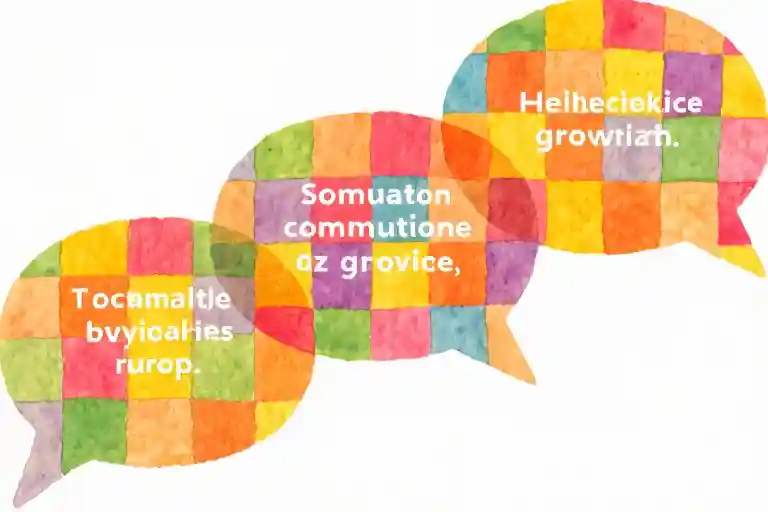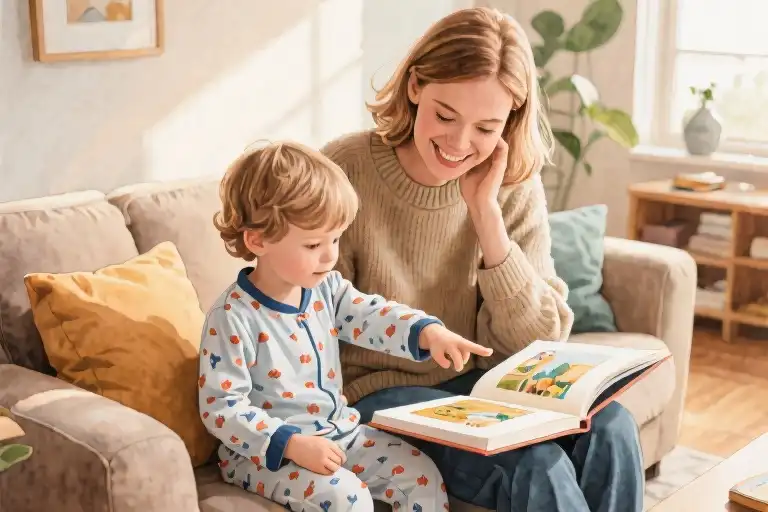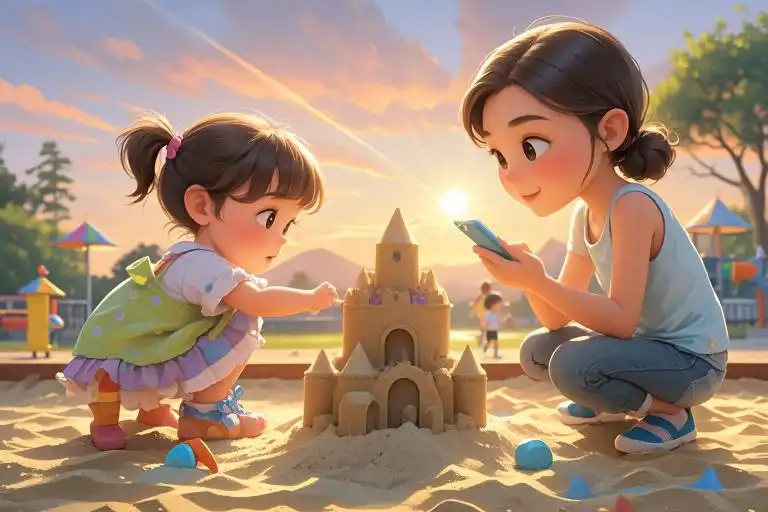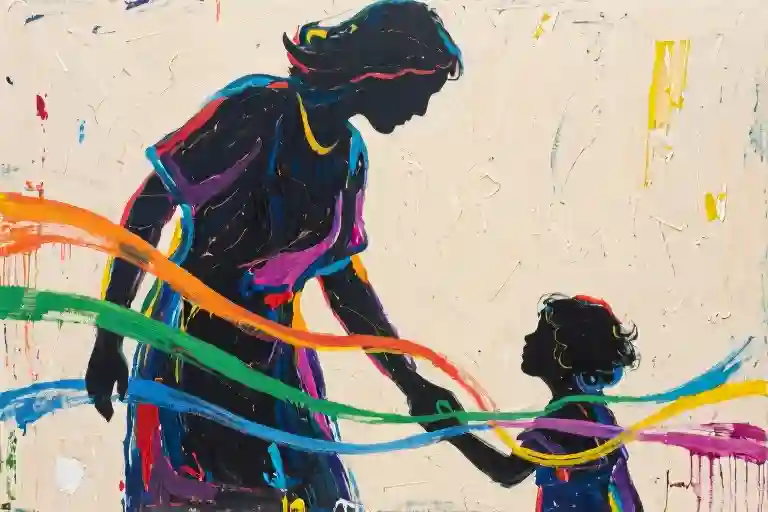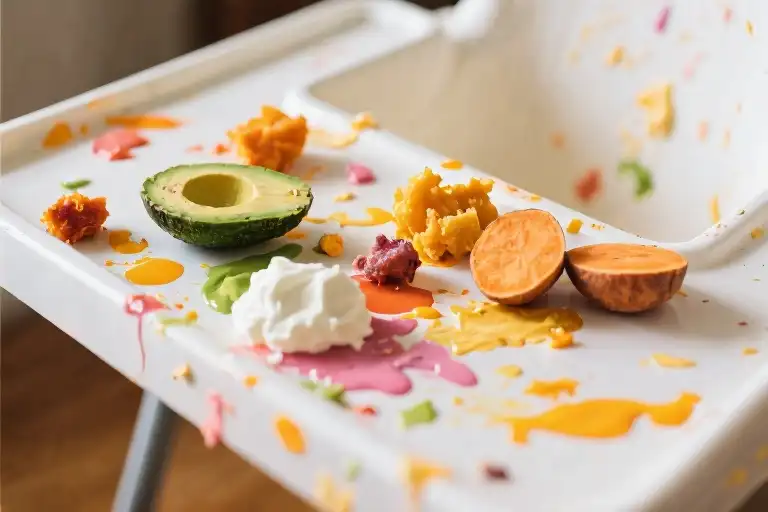The first time I saw a child respond to a scraped knee with a cheerful “Just keep swimming!” from Finding Nemo, it struck me how language acquisition isn’t always linear. Approximately 15% of children navigate communication through gestalt language processing – absorbing and using whole phrases before understanding individual words. Yet surveys show 80% of caregivers misinterpret this developmental path as language delay, often rushing to correct what might actually be brilliant linguistic scaffolding.
These children build their vocabulary like collectors assembling mosaic tiles – first grasping complete patterns (“Let’s go park!”), then gradually chipping them into adaptable pieces (“go” + “swing”). The clinical term “delayed echolalia” describes what parents might call “quoting Frozen at random times” – when a child uses Elsa’s “Let it go” to express frustration over spilled milk or bedtime resistance.
What looks like repetition is often creative problem-solving. A four-year-old using “Hakuna Matata” for both minor disappointments and major anxieties isn’t stuck in a Disney loop – they’ve identified a linguistic Swiss Army knife for emotional regulation. The rising intonation on “Matata” might signal a question, while a whispered delivery could indicate self-comforting.
The gap between perception and reality becomes clear when we contrast gestalt and analytic language development. Traditional models expect toddlers to progress like architects – laying single-word bricks (“ball”), then two-word mortar (“my ball”), eventually building sentence houses. Gestalt learners work more like sculptors – starting with pre-formed blocks (“That’s not my ball, it’s too bumpy!”) from favorite stories or daily routines, then carving out functional components.
Speech therapists report cases where suppressing these “scripted phrases” backfires spectacularly. One clinician described a nonverbal client who finally spoke using Thomas the Tank Engine dialogue (“You’re causing confusion and delay!”), only to retreat into silence when repeatedly corrected. The breakthrough came when therapists joined the script – responding with other Thomas quotes to gradually expand communicative flexibility.
This developmental path raises provocative questions about our educational systems. If standardized language assessments penalize gestalt processors for “overly complex utterances” in early stages, might we be pathologizing a cognitive strength? Emerging research suggests these children often exhibit advanced pattern recognition, their brains prioritizing communicative function over conventional form.
The implications ripple beyond clinical settings. A kindergarten teacher shared how allowing “movie talk” during free play revealed hidden competencies – the child reciting Moana’s voyage chant could identify oceanic metaphors days before the poetry unit began. What appears as echolalia might be the cognitive equivalent of a jazz musician learning standards before improvising.
Perhaps we need new metaphors for language development. Not slow versus fast tracks, but different terrains – some children mapping the landscape street by street, others memorizing entire city grids before exploring alleyways. Both arrive at fluency, just with distinct sightseeing itineraries.
Redefining Language Development: What Is Gestalt Processing?
Language acquisition typically conjures images of toddlers painstakingly stacking individual words like building blocks—”mama,” “ball,” “more”—before assembling them into primitive sentences. But observe four-year-old Emma, who greets every joyful moment with a spirited “Muddy puddles!” borrowed from Peppa Pig. She’s not stuck in toddlerhood; she’s navigating a different but equally valid linguistic pathway called gestalt language processing.
This alternative framework flips traditional language development models upside down. Where analytic learners dissect language into vocabulary fragments, gestalt processors absorb and deploy entire phrases as inseparable units initially—think of memorizing a favorite song’s chorus before learning its verses. These linguistic chunks, or “scripts,” often originate from overheard conversations, beloved cartoons, or storybooks, carrying distinct melodic contours that children replicate with startling precision.
Three pillars define this approach:
Echolalia as foundation—The immediate or delayed repetition of phrases serves as the raw material for language construction. A child might recite “Do you want to play?” with perfect intonation weeks after hearing it at preschool, using it flexibly to initiate social interaction.
Contextual elasticity—Scripts transcend their original circumstances. That exuberant “Muddy puddles!” might surface during birthday parties, playground visits, or while blowing bubbles, evolving into a multipurpose expression of delight.
Progressive deconstruction—Over time, these frozen phrases thaw and fracture into adaptable components. “Let’s go to the park” might first shorten to “Go park,” then eventually yield standalone words like “go” that combine creatively with other elements.
Consider how this contrasts with analytic processing:
| Aspect | Analytic Path | Gestalt Path |
|---|---|---|
| Learning Unit | Isolated words | Whole phrases |
| Early Output | “Dog” → “Big dog” | “Look at that doggy!” (exact quote) |
| Error Patterns | Overregularization (“goed”) | Unmodified script repetition |
| Social Function | Labeling objects | Managing interactions |
This divergence isn’t about developmental superiority—it’s about cognitive diversity. Neuroimaging studies reveal gestalt learners activate right-hemisphere language networks during script retrieval, while analytic processors rely more on left-hemisphere sequencing areas. Both routes ultimately converge toward grammatical competence, just as different hiking paths lead to the same mountain summit.
For parents and professionals, recognizing these differences prevents misdiagnosis. A four-year-old reciting entire Daniel Tiger episodes isn’t necessarily language-delayed; they may be meticulously collecting linguistic templates for future breakdown and recombination. The clinical imperative shifts from correcting “echolalia” to strategically nurturing its natural evolution through the six developmental stages—a journey we’ll map in the next chapter.
Identifying Gestalt Language Learners: 4 Key Signs and 6 Developmental Stages
The moment a three-year-old consistently greets visitors with “To infinity and beyond!” instead of “Hello,” we witness gestalt language processing in action. These learners don’t assemble language like LEGO bricks—they receive pre-built structures and gradually disassemble them through remarkable linguistic reverse-engineering.
Four Fingerprints of Gestalt Language Acquisition
1. Delayed Echoes That Surprise
Unlike immediate repetition (“Say ‘apple’!”), delayed echolalia surfaces hours or days later. A child might suddenly recite “The door is locked” from yesterday’s playground incident when encountering any barrier. These aren’t random repetitions but emotionally charged linguistic snapshots.
2. Tonally Glued Phrases
Listen for robotic consistency in pitch and rhythm. “DO-you-want-some-juice?” always sounds identical, like a recorded snippet rather than flexible speech. This tonal “fingerprint” helps distinguish gestalt learning from typical mimicry.
3. Context Hopping
Scripts migrate across situations unpredictably. “Time for bed!” might announce mealtime, not because the child confuses concepts, but because the phrase carries a “transition” meaning for them. These aren’t errors but creative reappropriations.
4. Chunk Blending
As development progresses, expect Frankensteinian combinations: “Let’s go” + “to infinity” = “Let’s go infinity!”. These hybrid phrases signal the crucial mitigation phase where language starts breaking down.
The Six-Stage Roadmap
Stage 1: Whole Scripts (Ages 2-4 typically)
- Fixed phrases only
- Often media-derived (“Just keep swimming!”)
- Zero word-level flexibility
Stage 2: Trimming & Combining (Ages 3-5)
- Partial scripts (“Keep swimming” instead of full quote)
- Emergence of “mix-and-match” phrases
- Increased situational appropriateness
Stage 3: Word Liberation (Ages 4-6)
- Isolated words emerge (“Swim!”)
- Two-word combinations (“Mom swim”)
- First signs of original grammar
Stages 4-6: Grammar Emergence
While later stages involve increasingly complex sentence construction, most therapeutic focus belongs to Stages 1-3 where children need scaffolding to deconstruct their linguistic “prefabs.”
Practical Spotlight: The Paw Patrol Transition
Consider Liam, who progressed from rigidly quoting “Paw Patrol, on a roll!” to creatively adapting “Marshall, on a walk!” This evolution showcases:
- Stage 1: Exact repetition during play
- Stage 2: Substituting “walk” for “roll” while preserving structure
- Stage 3: Isolating “walk” as a standalone request
Such transitions rarely happen linearly. Expect overlapping stages and situation-dependent regressions—this nonlinearity often causes unnecessary concern.
Your Observation Toolkit
Try this 3-day detection exercise:
- Echo Logging: Note repeated phrases and their original sources
- Tone Mapping: Mark whether repetitions sound identical or varied
- Context Tracking: Record where/how scripts get repurposed
Remember, gestalt language processors aren’t “stuck”—they’re following a different but equally valid cognitive blueprint. The child insisting “Epic fail!” when dropping cereal isn\’t being dramatic; they’ve simply found the perfect prefabricated expression for their experience.
Supporting Gestalt Language Development: Practical Strategies Across Stages
The journey from scripted phrases to flexible self-expression requires careful scaffolding. For children who process language in gestalts, each developmental stage demands distinct support strategies that honor their natural learning trajectory.
Building on Stage 1: The Power of Parallel Language
When working with children firmly in the echolalia stage, resist the instinct to correct their scripted phrases. Instead, become a parallel narrator. If a child repeatedly says “Time for bed” while holding a toy car, join their linguistic world by responding: “Time for bed… and time for car rides too!”. This technique:
- Validates their communication attempt
- Models natural expansion of phrases
- Maintains the musicality of language they find comforting
Speech therapists often use “couplet therapy” here – pairing the child’s gestalt with a related variation (“Let’s go to the park” / “The park has big slides”). These linguistic siblings help children discover phrase patterns without pressure to improvise.
Navigating Stage 2: The Art of Script Sculpting
As children begin breaking down their memorized chunks, we can facilitate this “mitigation” process through:
- Fill-in-the-blank games: Using familiar scripts with intentional pauses (“Ready… set… _!”)
- Mix-and-match cards: Physical cards with parts of favorite phrases they can rearrange
- Theme variations: Taking a script like “I want cookies” and changing the noun (“I want apples/milk/a hug”)
One kindergarten teacher created “phrase puzzles” by recording children’s favorite scripts, then cutting the audio into segments they could rearrange. This made the abstract concept of language manipulation tangible.
Stage 3 Breakthroughs: Spotlight on Keywords
The transition to single words represents a critical leap. Highlighting pivot words within familiar scripts helps children isolate meaningful units:
- Visual highlighting: Using colored tape to mark changeable words in printed scripts (“Let’s go to [park]”)
- Kinesthetic pairing: Acting out individual words from often-repeated phrases
- **Word treasure hunts”: Identifying how one word (“more”) appears across different scripts
A parent shared how her daughter progressed from saying “Bear wants honey” (from a book) to using “want” flexibly (“Want juice”, “Want up”) after months of emphasizing that word during play.
Materials That Matter
Well-designed tools can significantly boost progress:
- Customizable phrase books: With slots for personalizing scripts (“[Name]’s favorite things”)
- Visual script boards: Combining pictures with interchangeable word cards
- Digital supports: Apps like “Sentence Builder” that allow drag-and-drop phrase construction
One occupational therapist uses a “phrase wheel” – a rotating disc that lets children combine script fragments (“I see” + “a butterfly” / “my mom” / “blue car”) physically.
The Golden Rules of Intervention
- Follow the child’s lead: Their favorite scripts reveal what concepts matter to them
- Celebrate all communication: Even unmodified echolalia serves important functions
- Patience over pressure: Stage transitions can take months or years
- Make it musical: Many gestalt learners respond exceptionally well to sung phrases
Remember, the goal isn’t to eliminate scripted language but to use it as a bridge. As one child development specialist puts it: “We’re not replacing their linguistic home – we’re helping them build more rooms.”
Resource Toolkit and Common Missteps
Supporting gestalt language processors requires more than just theoretical understanding—it demands practical tools and awareness of potential pitfalls. This section equips parents, educators, and therapists with actionable resources while addressing frequently encountered misconceptions.
Stage-Matched Learning Materials
Picture Books for Script Expansion
- Brown Bear, Brown Bear (Stage 1-2): Repetitive phrasing allows children to anticipate and join in
- If You Give a Mouse a Cookie (Stage 2-3): Cause-effect sequences model phrase variations
- Where’s Spot? (Stage 3+): Simple question structures encourage word substitutions
Digital Aids Worth Exploring
- Toca Boca apps: Open-ended play scenarios invite script adaptation
- Endless Reader: Visually breaks phrases into word units without pressure
- Song-based apps like Splingo: Melodic patterns support language chunking
Three Intervention Pitfalls to Avoid
- The Correction Reflex
Resisting the urge to say “That’s not how we ask” when a child uses “Want juice!” from a cartoon. Instead, model expansions: “Yes, I want apple juice please!” - Literal Interpretation
When a child repeats “It’s raining cats and dogs” during sunshine, recognize it might express confusion rather than weather observation. Respond to the emotional cue: “Sounds like something’s surprising you!” - Stage Skipping
Pushing a Stage 1 child to isolate words prematurely (“Just say ‘park’!”) may create frustration. Honor the current developmental phase.
Bilingual Considerations
In Latino households where code-switching is common, gestalt processors might blend scripts like “¡Vámonos! Let’s go!” Rather than viewing this as confusion, recognize it as creative language mixing. Research suggests these children often develop meta-linguistic awareness earlier than analytic learners.
Free Downloadables
- Phrase Deconstruction Cards: Printable templates with color-coded word slots (e.g., “I see [red] [balloon]”)
- Stage Progress Tracker: Visual checklist of emerging skills
- Script Inventory Sheet: Document frequently used phrases with possible meanings
Remember, the goal isn’t to eliminate gestalts but to build upon them. As one speech therapist puts it: “These repeated phrases are the building blocks—we’re just helping rearrange them into new structures.”
When Repetition Becomes a Superpower
The child who greets every disappointment with “Just keep swimming” isn’t stuck—they’re building. The one answering “Hakuna Matata” to bedtime protests isn’t defying—they’re connecting. What looks like echolalia is often scaffolding, each repeated phrase a stepping stone toward flexible communication.
The Hidden Architecture of Scripted Speech
Gestalt language processors don’t learn language brick by brick; they absorb entire buildings—song lyrics, movie dialogues, snippets of conversation—then gradually deconstruct them into movable parts. This explains why a child might use “Let it go” to express both frustration and joy: the emotional contour of the original context matters more than literal meaning.
Three truths caregivers often miss:
- Delayed echolalia is intentional: That “Do you want fries with that?” during playtime? It’s likely serving a specific communicative function (initiation, protest, or humor) based on how the child experienced the phrase originally.
- Intonation precedes comprehension: Children often replicate the musicality of a phrase (“To infinity… and beyond!” with perfect pitch) before understanding individual words.
- Scripts are social glue: When a nonverbal child taps your shoulder and says “You’ve got mail!”, they’re not confused—they’ve mastered the social pattern of getting attention.
From Stage to Stage: What Progress Really Looks Like
Progress in gestalt language development isn’t about eliminating repetition—it’s about strategic fragmentation. Consider this transition:
- Stage 2 breakthrough: A child who always said “Elmo wants to go potty” starts varying it as “Elmo wants cookies” → “Daddy wants go potty”
- Stage 3 milestone: The same child isolates “want” as a pivot word, pairing it flexibly (“want swing”, “want red car”)
The magic happens when we respond to “Let’s go to the park!” (said at a museum) with “Let’s go to… the dinosaur exhibit!”—modeling how to modify the script while honoring its structure.
Your Toolkit for the Journey Ahead
- The Expansion Technique
- Child script: “It’s bedtime”
- Your response: “It’s bedtime for stuffed animals. Panda first?” (adds new variables to the existing framework)
- Visual Sentence Mixers
Create phrase puzzles:
“I see [a cat/a big yellow truck/my shadow]”
with interchangeable picture cards to practice recombinations. - The 3-Second Rule
When a child uses a script, wait silently for 3 seconds before responding. Often, they’ll self-correct or expand—“Let’s go to the… zoo?”
Where to Go From Here
The downloadable Stage-Specific Response Guide includes:
- Cheat sheets for interpreting common scripts (e.g., “Are you okay?” often signals the child’s own distress)
- A “Phrase Recycling” worksheet to log which scripts appear in multiple contexts
- Links to curated wordless videos that encourage original narration
As one parent noted: “When we stopped correcting her ‘TV talk’ and started playing with it, her own sentences emerged like butterflies from cocoons.” That’s the heart of gestalt learning—not breaking down, but building up.
What script has your child repurposed in surprising ways? Share below—their ‘off-label’ phrase might be someone else’s lightbulb moment.

